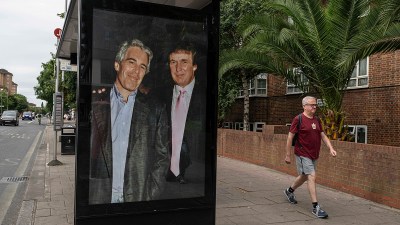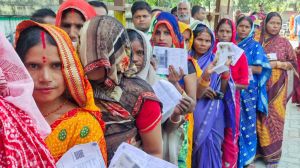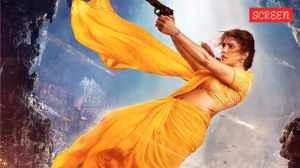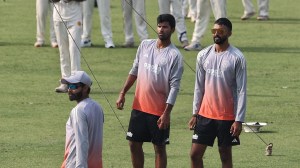The road to the Rajya Sabha
You know we spent Rs 85 lakh on our elections to the Lok Sabha,'' said a former MP who lost this time. Elections to the Lok Sabha are ...

“You know we spent Rs 85 lakh on our elections to the Lok Sabha,” said a former MP who lost this time. “Elections to the Lok Sabha are now taking place every year, and you cannot be sure of victory. Besides, the campaign is a nerve-racking business. Now we hear that those who pay Rs 2 to 3 crore are better placed to get a Rajya Sabha nomination. We have been wondering whether it would be more worthwhile to pay that kind of money and go in for a Rajya Sabha ticket. In the long run it may turn out to be cheaper. At least it will ensure a six-year term.”
These words highlight a new and a stark reality that money may well be influencing the nomination of Rajya Sabha tickets. And that veteran politicians may prefer the Rajya Sabha route to get into Parliament in an era of coalitions.
For most politicians, Lok Sabha has been the more sought-after House so far. Lok Sabha MPs can bring down a Prime Minister, vote on money bills and directly represent the people. It is open knowledge that money has played a vital role in elections to the Lok Sabha since the mid-fifties.
Industrialists started to back individual candidates since the 1957 polls and campaigning costs have also shot up. The country’s first election in 1952 was relatively free from the influence of money largely because the values and idealism of the freedom movement still had a residual impact. Today the ceiling for an election to the Lok Sabha may be around Rs 15 lakh, but the amount spent is at least 6 to 10 times that. Even in the reserved constituencies, candidates have to spend upward of Rs 60 lakh.
Since the eighties, money started to play a role even in the Rajya Sabha elections. Not everybody indulged in such behaviour but some did. This trend became more pronounced when a party had surplus votes and needed to get additional numbers from another group to make it. Often, in such cases, people in the world of business were left with the responsibility of organising for the shortfall.
But of late a new phenomenon is surfacing, which cuts across party lines, and that is the offer of large sums of money to parties for getting a Rajya Sabha ticket. There may soon come a time when only those who are in a position to pay big sums would be able to swing a nomination. This trend will change the character of the Upper House still further. As it is the Rajya Sabha is ceasing to be the House of Elders, which is meant to keep a watchful vigil on the Lok Sabha and intervene in any decision made there which is not in the interests of the people. The Upper House cannot reject any legislation passed by the Lok Sabha but it can send it back for reconsideration. As the Council of States, the Upper House is also meant to safeguard the interests of states.
It was the Rajya Sabha which had defeated Indira Gandhi’s famous abolition of privy purses by one vote. Subsequently, she reintroduced it by way of an ordinance. It was ratified by both Houses of Parliament after she came back to power with a thumping majority. The whole atmosphere had undergone a change by then and even the Upper House went along with it.
The House’s “elder” status began to undergo a change during Rajiv Gandhi’s time when he nominated about a dozen Congress leaders in the younger age group, like Anand Sharma, Pawan Bansal and Hansraj Bhardwaj to the Upper House in 1984 (when he was not yet PM but was influential enough in the party) and again in 1986. His idea was to rehabilitate the supporters of Sanjay Gandhi and deflect criticism that he was marginalising them.
Shouting in the Upper House used to be unheard of till the eighties. Today, commotion and catcalls are as commonplace in the Rajya Sabha as they are in the Lok Sabha. When Indira Gandhi was a Prime Minister, a woman MP of the Congress attacked a Socialist member and pushed him to the ground. Gandhi herself conducted an enquiry into the episode and made the MP apologise.
Rajiv Gandhi’s tenure was also known for his shouting brigade comprising S.S. Ahluwalia, now in the BJP, Ratnakar Pandey and some others. Rajya Sabha members, and their counterparts in the Lower House, have forgotten the solemn vow they took on the occasion of the 50th year of independence when a commemorative session of Parliament was held. They had resolved not to disrupt the question hour or to rush into the well. There was a time when the Upper House was known for its galaxy of big names those who have made a mark in their various fields. They were people of stature like Pandit Hridaynath Kunzru, Bhupesh Gupta, Sardar K.M.Panikker, Krishna Menon, M.C.Chagla, and Ashok Mehta. This made for a high level of debate.
Today, stature and public service are not the over-riding factors in the choice of nominations indeed, a Rajya Sabha ticket has increasingly become a way of rewarding supporters. The criteria is personal loyalty to leader. As a result many disparate people are making their way into the House.It is easier for smaller parties to give tickets to their donors because they are one-person fiefdoms and there is no one to question the leader. But this is a little more difficult to accomplish in mainstream parties,except when the decision is left to the leader.
The proliferating tribe of industrialists and businessmen, who used to fund others in the past, are now themselves making it to Parliament, people like K.K. Birla, Santosh Bagrodia, Kamal Morarka, Amar Singh, Jayant Malhoutra, Akhilesh Das, Prem Gupta, Suresh Keshwani, Mahendra Prasad, and Sanjay Dalmia. This time too, there is R.P.Goenka, Vijay Mallya and Lalit Suri among the Rajya Sabha hopefuls. Of course, in earlier times, businessmen like a Kamal Nayan Bajaj, or a R.R. Morarka or a G.D.Somani did make it to the House, but they were few and far between. Now the phenomenon is much more widespread.
It was the nominated category which provided for professionals to be elected to the Upper House with the view of widening and enhancing the quality of debate. Fortunately, and possibly due to the "interventionist" role played by successive Presidents, the deterioration here has not been so marked. In the fifties and sixties, people like M.C. Setalvad, Prithviraj Kapoor, Nargis Dutt, Harivanshrai Bachchan, and Maithili Sharan Gupta were among those who became Rajya Sabha MPs. The Rajiv era saw the elevation of people like Amrita Pritam and Ravi Shankar. And now the BJP has opted for Lata Mangeshkar and Fali Nariman.
OUT :
Prominent members who are due to retire from the Rajya Sabha (some of them may return)
Sitaram Kesri, Jagannath Mishra,Hansraj Bhardwaj, Govindrao Adik, Saroj Khaparde, V.N.Gadgil, Ram Jethmalani, Sanjay Nirupam, Bhuvnesh Chaturvedi, Satyanarayan Dronamraju, V.Kishore Chandra Deo, Madhavsinh Solanki, Yogendra Alagh, K.Hanumanthappa, Janardhana Poojary, Janeshwar Mishra, Jayant Malhoutra, Rajnath Singh, Gurudas Das Gupta, Biplab Das Gupta, E.Balanandan, Vyalar Ravi.
IN
Those who’ve made it… and those who aspire to make it
Arun Jaitley, Sushma Swaraj, Balbir Punj, Prabhu Chawla, Rajiv Shukla, S.S.Ahluwalia, Ram Jethmalani.R.P.Goenka, Lalit Suri, Vijay Mallya, Arjun Singh, Natwar Singh,Ram Niwas Mirdha, Murli Deora, Ajit Jogi, Praful Patel, Shiv hankar, Motilal Vora.



- 01
- 02
- 03
- 04
- 05




























